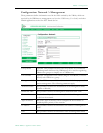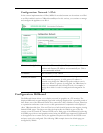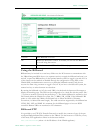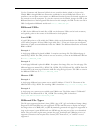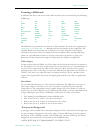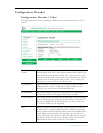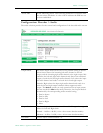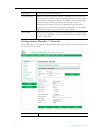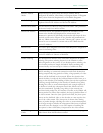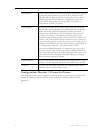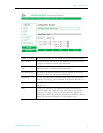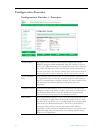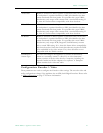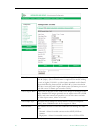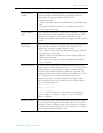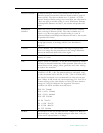
MPEG-2 Configuration
VBrick MPEG-2 Appliance Admin Guide 21
Receive Address
Mode
Allows the user to specify how the receive address will be
configured: IP address, Host Name, or Program Name. If Program
Name, select from the dropdown list of Available Programs.
Available Programs Select from dropdown list of available programs. This automatically
populates Receive IP Address and Source IP Address.
Receive Host Name Sets the source for video by using the Host Name. This parameter
can be used only for a unicast source.
Receive IP Address In multicast mode, this parameter defines the IP address of the
stream to be decoded and displayed. In unicast mode, this
parameter is optional. If left blank, the decoder will accept all data
received on the receive IP port. If set, decoder will communicate
with any VBrick that has the encoder "unicast poll" option set, and
instruct it not to transmit it's stream unless this VBrick has this
receive IP Address.
Receive Port The receive port designates what local IP/UDP port is assigned to
listen for incoming video.
Receive Mode This read-only parameter informs the operator whether the selected
receive IP Address is Unicast or Multicast.
Packet Ordering The identification number in the IP header determines IP packet
ordering. The packet ordering feature lets the VBrick re-order
packet fragments as they arrive. If you disable packet ordering, the
out-of-order packets are simply discarded. Packet ordering may
increase latency and can add up to 100 ms of additional delay.
Jitter Queue Delay jitter is defined as the variation of the delays with which
packets traveling on a network connection reach their destination.
During exceptionally long periods of delay, a large quantity of video
packets will be buffered in the network. When the situation that
caused the delay is resolved, the buffered frames will be burst, as a
group, to the decoder. The handling of delay jitter is then a problem
of having enough buffering in the decoder to handle a long delay,
allowing the video to seem uninterrupted, and enough capacity in
the buffer to handle the subsequent burst that follows once the
delay has terminated. Typically, long delays in the network are
associated with packet loss. No amount of buffer at the VBrick will
correct packet loss. When first enabled, the jitter Q buffers 85ms of
the video stream. Once the jitter Q has been filled, the jitter queue
meters out the buffered video to the decoder at a rate equal to the
rate of the video stream. The jitter queue is drawn down during
times of packet drought, allowing the video to seem uninterrupted,
but is large enough to handle the subsequent 85ms burst of packets
that result once the drought is over. The impact of enabling the
jitter queue is that a 85ms delay is imposed on the video stream.
SAP IR Program
Guide
Enables or disables the ability of the operator to select the program
guide feature from his IR remote control.



